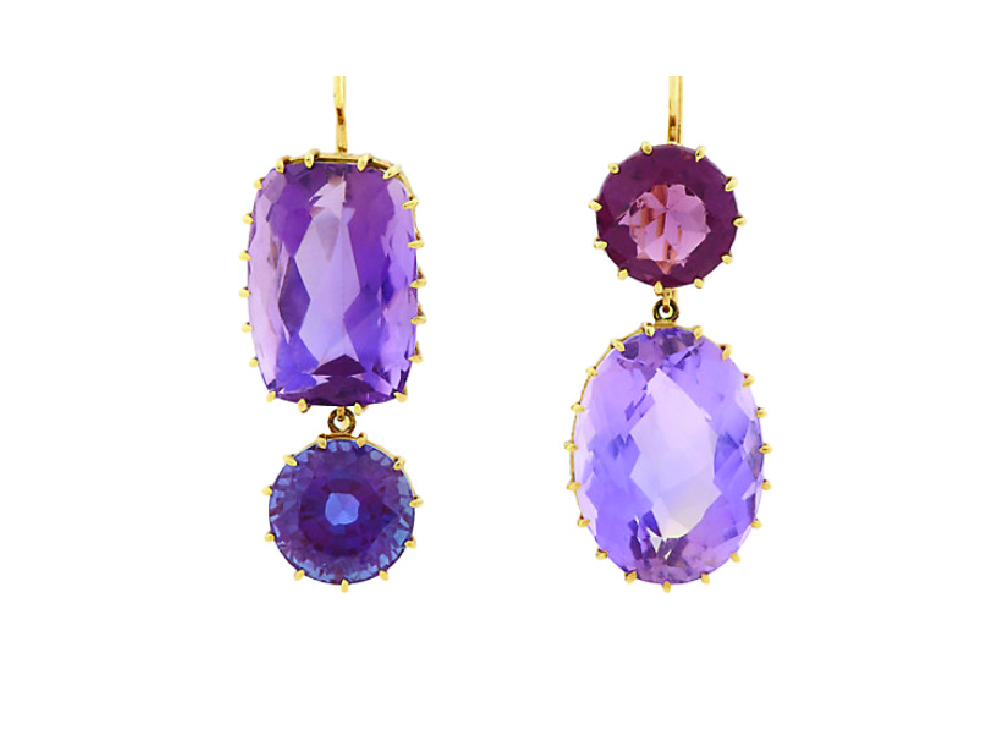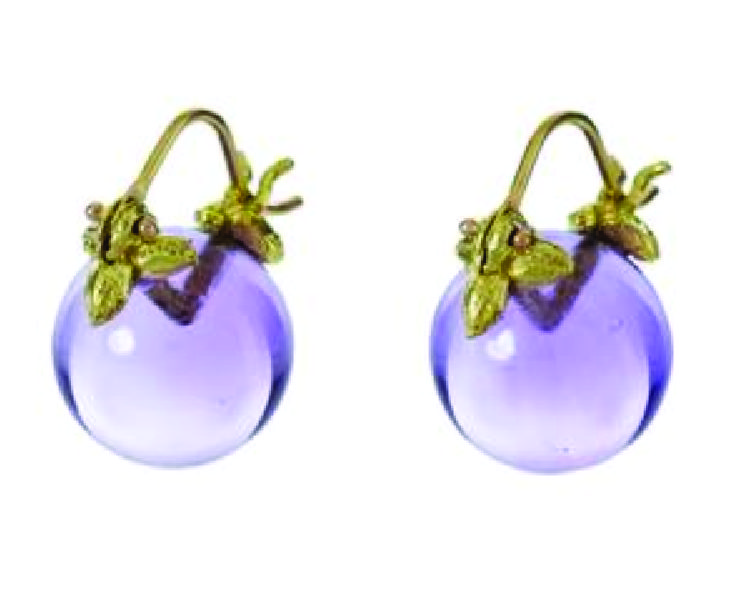Amorous For Amethyst: February’s Birthstone reveals a rich history
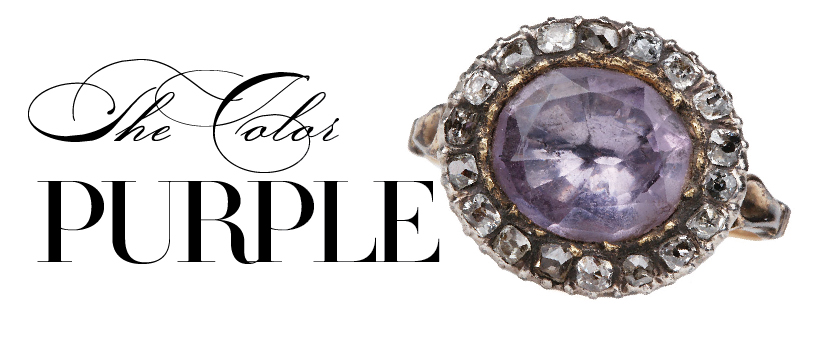
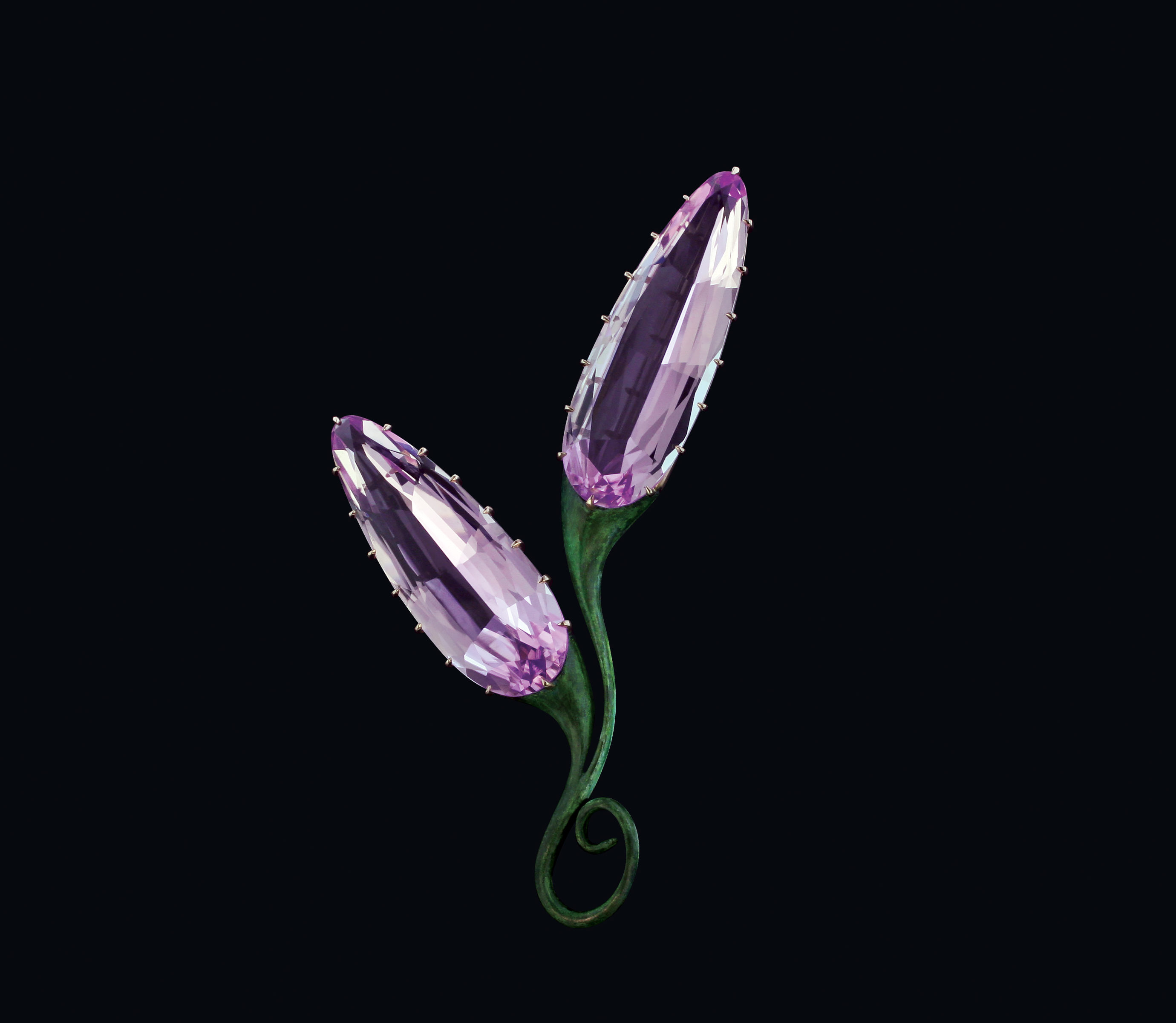
Photo courtesy of ©Taffin by Philippe de Givenchy for Taffin. Rizzoli New York
Amethyst with its rich history of royal, spiritual/healing and counter-culture references is the birthstone of February. All of amethyst’s permutations of purple are receiving their fair share of attention in the studios of contemporary designers who rock big, gutsy gemstones as well as the shops and spaces of antique dealers who specialize in 200-year-old period pieces. In addition, due to its healing and curative properties, it has become the latest in a long line of gem-infused beauty products.
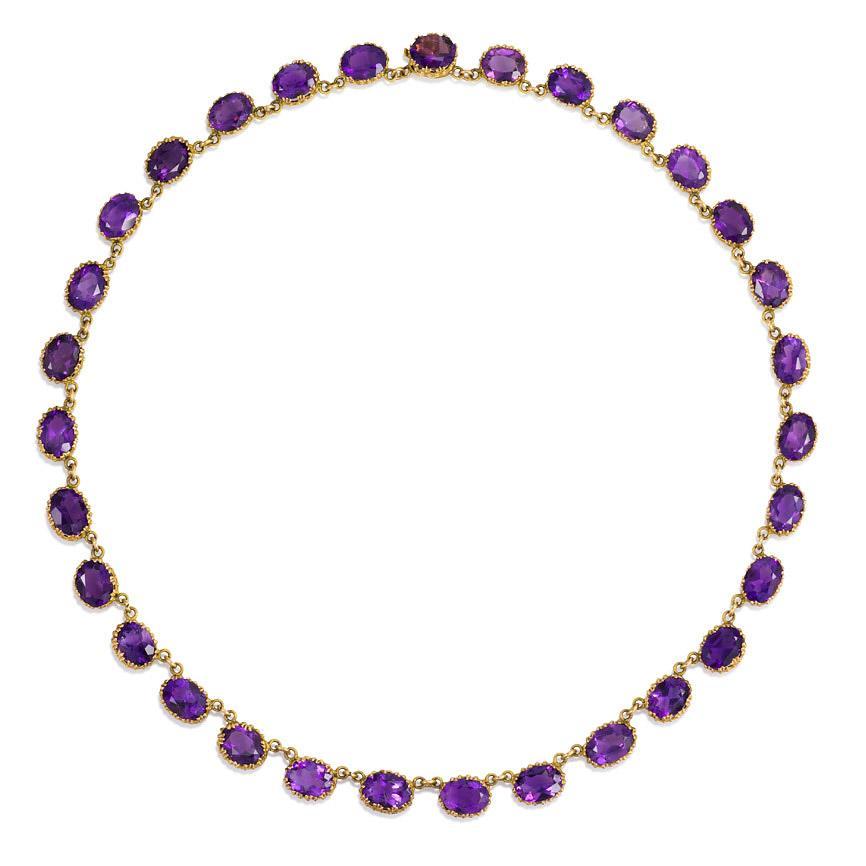
Kentshire Georgian Amethyst Riviere Necklace
For many seasons, jewelry’s overall mood has been blue with turquoise, moonstone, lapis and boulder opals continuing to be the most popular stones crossing the modern and antique markets. Although these gems still remain strong, designers and dealers are in more of a ‘purple haze’ these days.
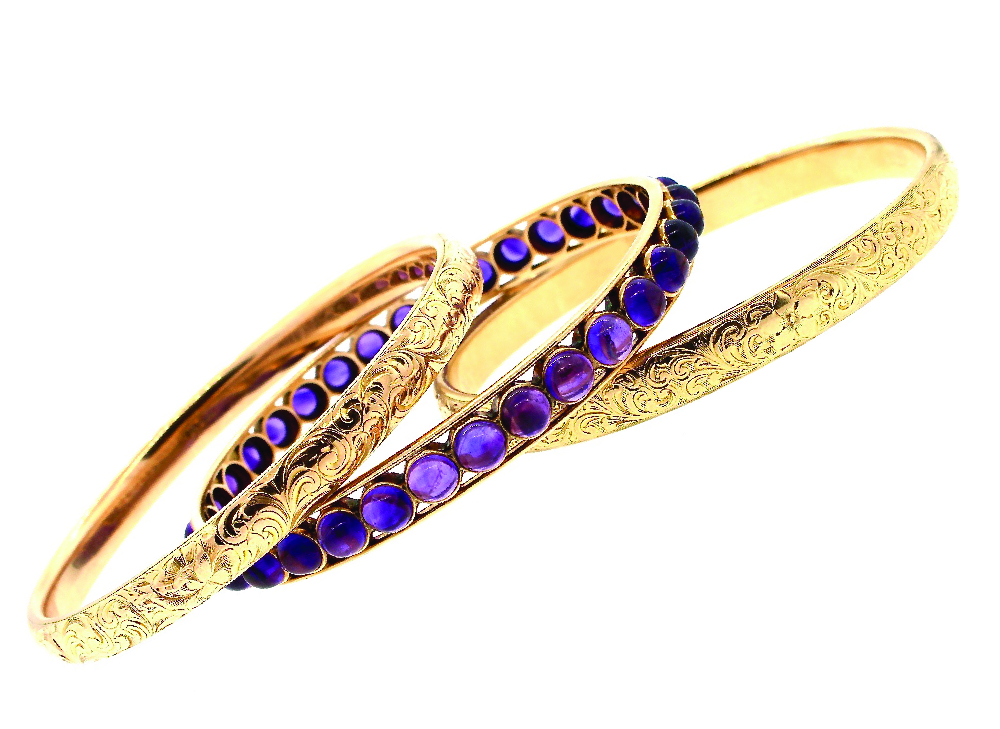
Victorian Gold and Amethyst Bangles at Keyamour
At various antiques show, I continue to see amethyst pieces at dealers who specialize in Georgian and early Victorian jewelry. These include Georgian and diamond rivières, foil-backed rings, noble looking crosses and wide bracelets adorned with intricate gold work such as cannetille and tiny granulation.
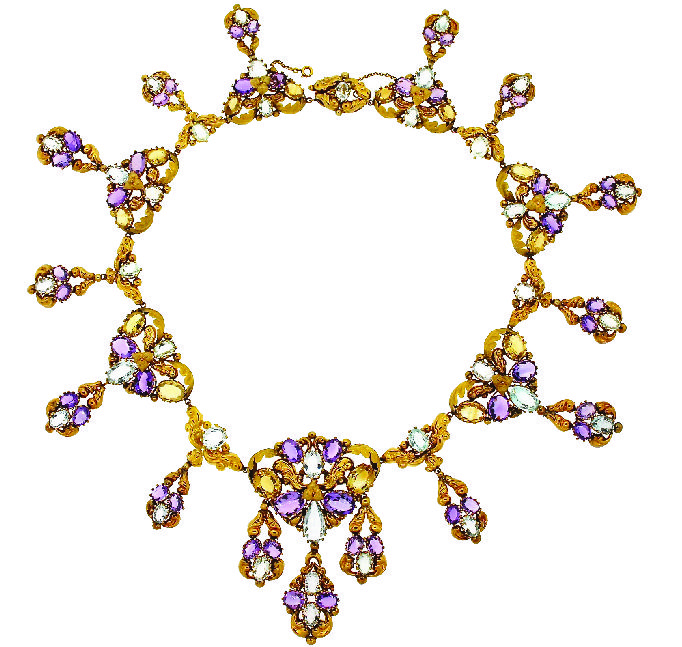
Amethyst and Citrine antique necklace at Keyamour
On the other modern end of the spectrum, contemporary designers feature myriad shapes of gemstones including slices, cylinder shapes and rose cuts, to name just a few. Unlike ancient times, when it was the stone of nobility and was equal in price to diamonds, emeralds, sapphires and rubies, amethysts are quite affordable and range from pale lavender to rich violet hues.
- Renee Lewis Amethyst Earrings
- Gabrielle Sanchez Amethyst Earrings
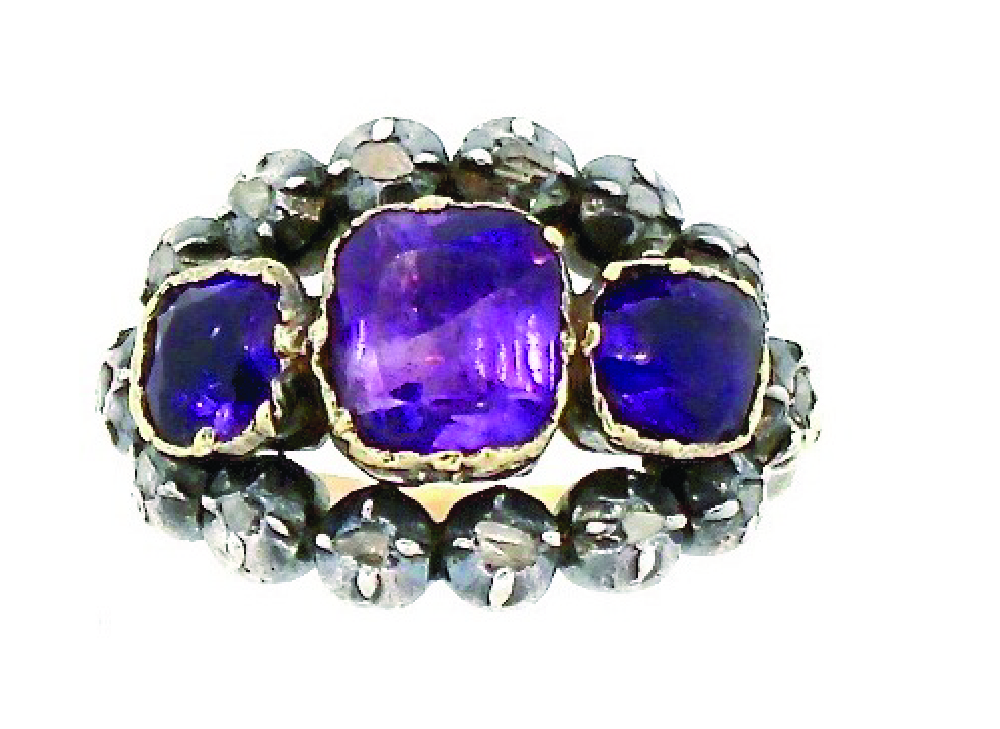
Georgian Amethyst and Rose Diamond Ring at Keyamour
The imperial color purple was worn by the rulers of the Byzantine and Holy Roman Empires, thus amethyst became associated with Ecclesiastical jewels and European aristocracy, adorning the fingers of bishops as well as the coronation regalia of British royalty. The 19th century discovery of a large deposit of amethyst in Brazil lowered the cost, allowing large amethysts to be set more frequently into jewelry throughout the 20th century.

A gift of a gem set and pearl pendant with a handwritten note from Her late Majesty Queen Alexandra to one of her closest friends who is referred to as Gladys in the note. It is Lady de Grey, Marchioness of Rippon,who was responsible for bringing the Ballets Russes to London.
When we talk about the spiritual quality of amethysts, we go back to Greek legends that associated amethyst with Bacchus, the god of wine, which the color of amethyst resembled. It was believe that wearing amethyst prevented drunkenness—this branched out into a broader meaning of clear-headed and quick-witted thinking in battle and in business affairs. Often seen as a stone of peace and calming, it was thought to soothe nightmares.
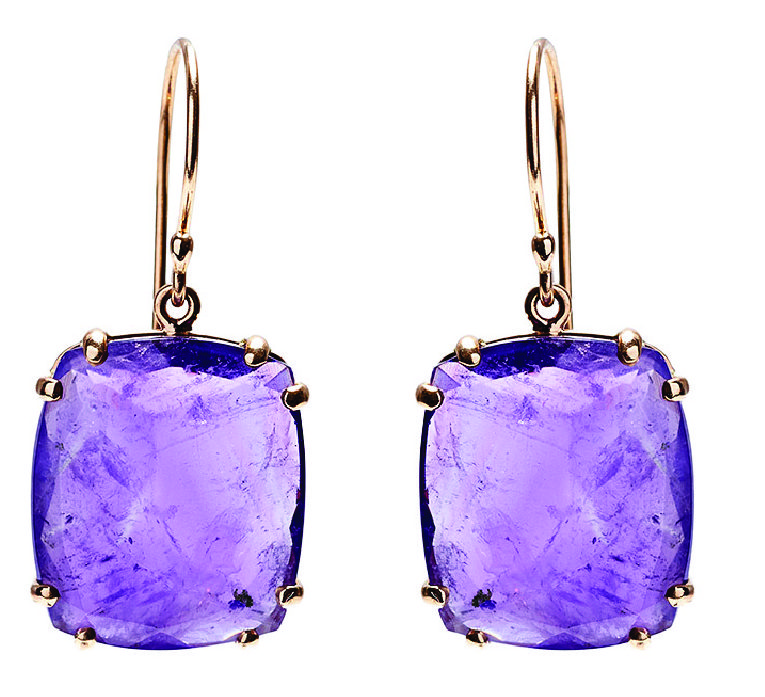
Jamie Joseph Amethyst Earrings
From the 20th century until present times amethyst is thought to calm the mind and keep it clear and centered while opening to spiritual direction. Amethyst stimulates the Crown Chakra to open and promotes intuition, wisdom and greater understanding of oneself and others. It became one of the three big stones for cocktail rings in the ‘40s and ‘50s, along with aquamarine and citrine.
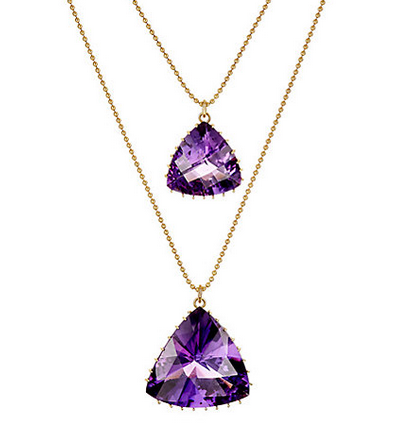
Renee Lewis double amethyst pendant
While the use of crystals for healing has persisted from ancient through modern times, it hit a high note during the psychedelic ‘60s and freethinking ‘70s. Amethyst was not only part of the culture, worn in the rough as amulets on leather cording, but it was used once again for its curative powers.
Although finding a piece you love in your birthstone brings a smile to any girl’s face, it’s not only February babies that can be adorned in this gem of which there are a wealth of styles and just as many reasons to wear them.
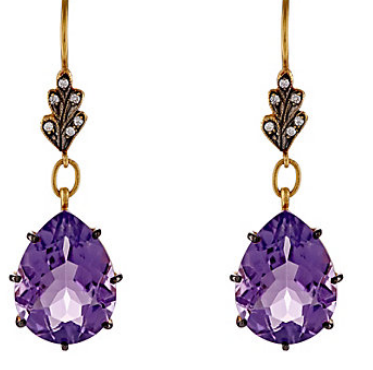
Cathy Waterman amethyst earrings

